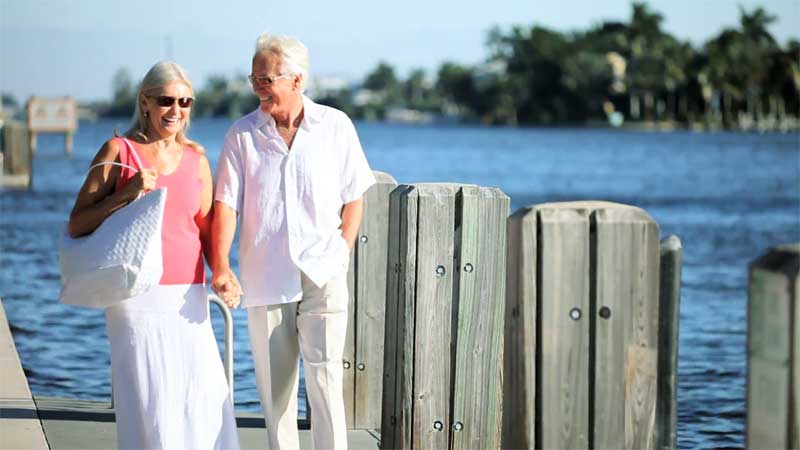Secret #16 A Balanced Approaches To Leisure
Leisure is a fundamental human need.

We use it to recharge our batteries, to act as a diversion in our lives, to create excitement, anticipation or simply to rest and contemplate.
Things change, however, when leisure becomes the central focus of our lives.
Leisure, by its very nature, loses its luster when it is the norm in our life rather than the diversion. For many retirees, the idea of leisure is associated with “not having to do anything”. In the end, a lack of stimulation affects our mental and emotional state and then ultimately our physical wellbeing.
There is a big difference between “time-filling” activities and “fulfilling” activities that we look forward to.
In retirement, leisure activities often replace workplace functions to meet the basic needs that we have.
Successful retirees balance their leisure over many different activities and take the opportunity to do new things and not get into a rut.
There is so much to see and do in Australia, and retirees can have an incredible time discovering the beauty of the country.
Australia is well known for its wide variety of landscapes and its varied climate, which means there are many types of areas to be seen. If you want to explore this great continent, feel free to pack your bags and embark on a journey that can last from several hours to several days.
Travel within Australia
There are seemingly endless places to travel to within Australia.
Retirees may like to plan weekend breaks to popular cities like Melbourne, Sydney, or Perth, or to plan longer trips to explore more of Australia, such as the Outback, or the Great Ocean Road, in Victoria.
Other must-see spots in Australia are The Whitsundays on the cost of Queensland, Margaret River in Western Australia, and Lord Howe in the Tasman Sea.
If you enjoy travel, it is best to read through a travel guidebook to learn more about the various places to visit within Australia, and to help you plan your trips.
For example on a recent trip to Tasmania we choose to visit places with weird names like Egg and Bacon Bay, Bay of Fires, Snug and D’Entrecasteaux Channel
Outdoor activities and sports
Spending time at the beach is a common pastime in Australia. As so many Australians live near the coastline, water-based activities (surfing, kite surfing, swimming) are very popular.
You can also enjoy diving, snorkelling, sailing, kayaking, and stand-up paddle boarding. The most popular place for diving and snorkelling is the Great Barrier Reef, located in Queensland, but beautiful dive sites can be found all over Australia.
If you are interested in water sports, but you are a beginner, you will find instructors and schools all over Australia that can help you learn.
The sun in Australia is incredibly strong, so apply sunscreen often to yourself and young children, wear a wide-brimmed hat, and consider wearing a sun shirt, or rash guard when swimming, to protect your skin from dangerous UV rays. Even in winter months, the sun can be very strong.
There are many beautiful hikes and walks to be done in Australia, and outdoor hobbies such as cycling and running are also popular. Australians value fitness, and enjoy staying active by taking part in outdoor activities.
Sports are also very popular in Australia, with many locals following professional teams or participating in recreational teams. Joining a sports club can be a great way to meet new people, and popular sports include rugby, soccer, and cricket.
Culture and sightseeing
Australia has a deep culture and history. Major cities offer museums, theatre performances, and festivals, which can be great to visit.
Canberra, for example, has many museums and galleries such as the National Gallery of Australia, which has the biggest collection of Aboriginal and Torres Strait Islander art.
Museums in Australia often host worldwide travelling exhibitions, meaning you can check out art collections or historical artefacts on loan from places such as the British Museum or the Smithsonian.
Visiting regional and remote areas of Australia allow visitors to learn more about Australia’s Indigenous history, by visiting places of significance to the Aboriginal and Torres Strait Islander people of Australia.
Step out in any city to enjoy sophisticated cocktails, delicious food and behind-the-scenes tours at any one of these great urban distilleries. In 2013 there were fewer than 50 registered distilleries in Australia. Today the number has reached nearly 140 – and it continues to grow.
Stay Safe
Wherever you decide to go, it pays to stay safe. Follow these four simple steps to ensure you’re prepared to travel:
- Make sure your travel insurance is up to date before you leave.
- Organise your medication prior to departure, and make sure you have extra scripts handy just in case.
- Organise locks for your bags and ensure you have a foolproof way to carry your valuables and money. Carry your personal identification on you at all times if you can.
- Print out your travel information to leave with someone at home and take a photocopy with you as well.
- Uluru/Ayres Rock – northernterritory.com
- The Great Barrier Reef – greatbarrierreef.org
- Mudgee – Wine Australia
- Mudgee NSW – Visit NSW
- Launceston – Discover Tasmania
- Daylesford – Visit Victoria
- Bay of Fires – East coast Tasmania
- Attractions – Great Ocean Road
7 Breathtaking Sights to See in the Kimberley – Tourism Australia
Secret #17 Retire Abroad

